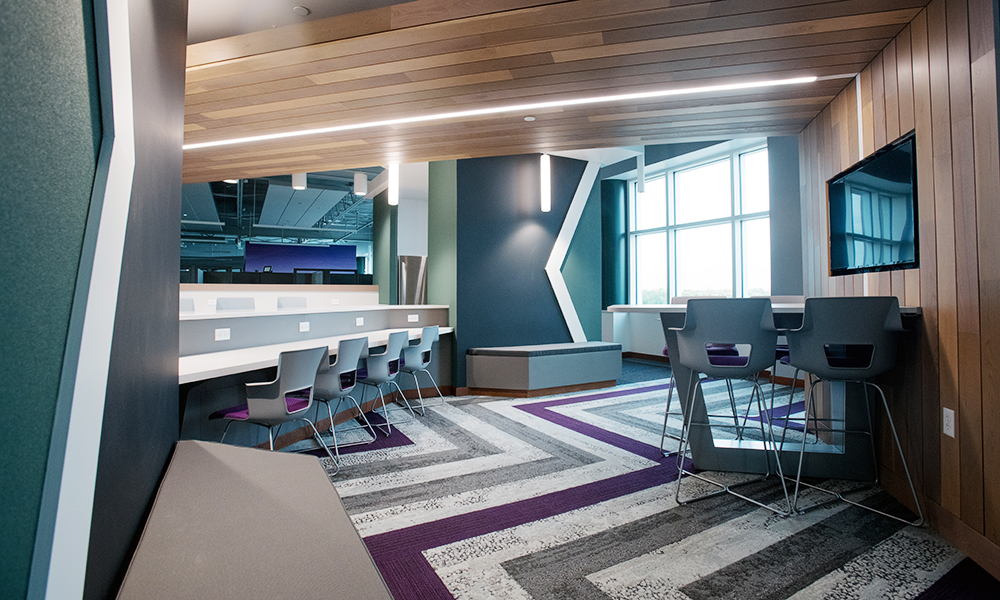For years, many employers believed that collaboration best occurred through formal, scheduled meetings with various participants. As a result, most modern workspaces are rife with conferences rooms and formal meeting spaces. These areas were designed for large group work processes, traditional exchanges of information and efficient decision making.
In recent years, however, the idea of collaboration has been redefined by employees and organizations. Employees increasingly desire social connection and engagement as part of their employment experience. Today’s organizations require greater efficiencies, such as the speed of group decision making, in addition to more innovation— which some research suggests is nurtured through informal, social and creative interactions. The combination of new employee expectations and emerging enterprise needs has shifted the workplace from a “me” to “we” environment.
Cubicles and closed-door offices are increasingly becoming outmoded. Numerous employers are converting traditional workspaces to modern offices that encourage collaboration and mobility. If your business is planning an office remodel, consider these workspace redesign tips to potentially increase productivity, creativity and collaboration.
Collaborative Space Should be Designed for its Use
Many businesses make the mistake of thinking that creating modern, innovative spaces alone will enhance employee capabilities. Truth is, employees might actually be less productive if they are working in an environment that feels inconsistent with their task or mission. The most common types of collaborative spaces include three categories: traditional, specialty and extra-curricular. Traditional spaces include variously sized conference rooms, while specialty spaces include video conferencing capabilities and project space. Extra-curricular spaces are often cafés, game rooms or outdoor activity areas. Before beginning a remodel, employers should interview their workforce to better understand what types of spaces best suit their tasks.
Create an Open Workspace, but Maintain Privacy
In 2015, Facebook moved thousands of its employees into one mile-long room. There were various tables that employees could choose to work at— each designed for six or more people. Many employees were unhappy with this change because of the lack of private space. There was nowhere to work silently, host a private meeting or take a phone call. As the workplace continues to shift toward a more collaborative environment, it is important to remember that not all employees thrive in the same public workspace. The productivity of employees may also suffer if they are constantly distracted by meetings, phone calls or the other employees around them.
Plan for Innovation and Evolution
The spectrum of group spaces being offered continues to widen. As the nature of collaboration and emerging enterprise needs continue to shift, workplaces must evolve. When planning a redesign, employers should consult with builders about maximizing the variability of their space. The new wave of workspace collaboration seeks to increase employee productivity and interaction, while also minimizing the utilization of physical space. Workplaces should be redesigned to implement new technology and employee needs without a complete overhaul of the existing structure.



